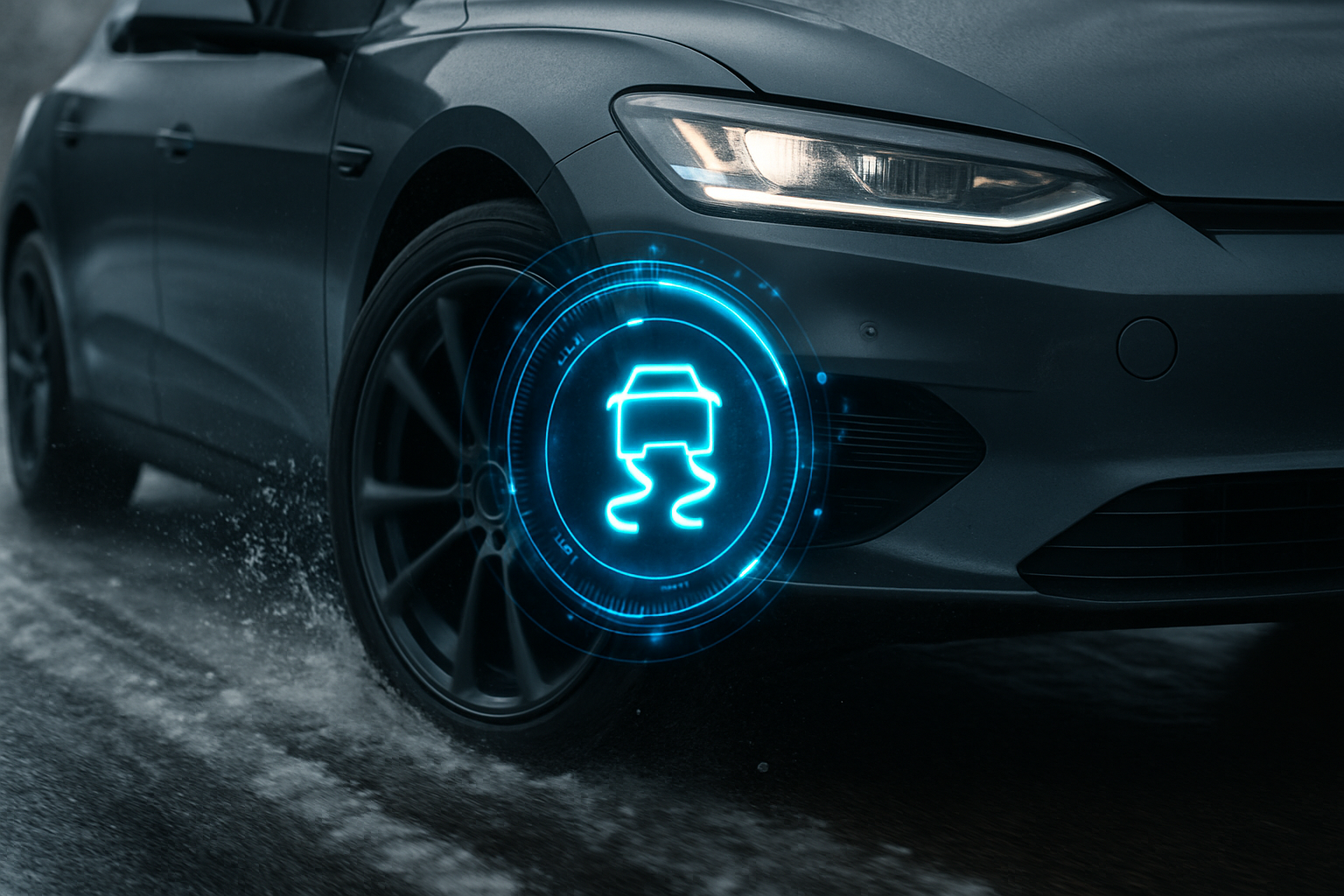Tyre Pressure Monitoring Systems: The Silent Guardians of Road Safety
In the realm of automotive safety, one unsung hero works tirelessly behind the scenes, constantly vigilant yet rarely acknowledged. Tyre Pressure Monitoring Systems (TPMS) have quietly revolutionised how we maintain our vehicles and ensure optimal performance on the road. As we delve into the world of these silent guardians, we'll uncover their fascinating history, explore their intricate workings, and examine how they've transformed our driving experience. Buckle up as we embark on a journey through the high-pressure world of TPMS technology.

As the technology matured, automotive manufacturers began to recognise its potential for everyday vehicles. The tragic Firestone tyre recall in the late 1990s, which highlighted the dangers of underinflated tyres, served as a catalyst for wider TPMS adoption. In response, the United States passed the TREAD Act in 2000, mandating TPMS in all new vehicles by 2007. Europe followed suit with similar legislation in 2012, cementing TPMS as a standard safety feature in modern automobiles.
The Inner Workings: How TPMS Keeps You Safe
At its core, TPMS utilises sensors to monitor the air pressure within a vehicle’s tyres. These sensors can be either direct or indirect, each with its own method of operation. Direct TPMS employs physical pressure sensors within each tyre, transmitting real-time data to the vehicle’s onboard computer. Indirect TPMS, on the other hand, uses the car’s anti-lock braking system (ABS) to detect changes in wheel rotation speed, which can indicate a loss of tyre pressure.
When a tyre’s pressure falls below the recommended level, the system alerts the driver through a warning light on the dashboard. This early warning can prevent accidents caused by underinflated tyres, which can lead to reduced handling, increased stopping distances, and even catastrophic blowouts at high speeds.
Beyond Safety: The Performance and Efficiency Benefits
While safety is the primary focus of TPMS, its benefits extend far beyond preventing accidents. Properly inflated tyres contribute significantly to a vehicle’s fuel efficiency. Underinflated tyres increase rolling resistance, forcing the engine to work harder and consume more fuel. By maintaining optimal tyre pressure, TPMS helps drivers save money at the pump and reduce their carbon footprint.
Moreover, correct tyre pressure ensures even wear across the tyre’s tread, extending its lifespan and reducing the frequency of replacements. This not only saves drivers money but also has positive environmental implications by reducing tyre waste.
The Challenges of Implementation: Overcoming Technical Hurdles
Despite its clear benefits, the widespread adoption of TPMS has not been without challenges. One of the primary hurdles has been the integration of TPMS with existing vehicle systems. Early iterations of the technology often suffered from false alarms or failed to detect slow leaks, leading to driver frustration and reduced trust in the system.
Battery life has been another significant concern, particularly for direct TPMS sensors. These sensors rely on small batteries that can last anywhere from 5 to 10 years, after which they must be replaced. This replacement process can be costly and time-consuming, especially for vehicles with sensors mounted inside the tyres.
Manufacturers have worked tirelessly to address these issues, developing more reliable sensors, improving battery technology, and refining the algorithms used to interpret pressure data. The result is a new generation of TPMS that offers greater accuracy and longevity, ensuring that drivers can rely on this critical safety feature for years to come.
The Future of TPMS: Smart Tyres and Beyond
As we look to the future, TPMS technology continues to evolve at a rapid pace. One of the most exciting developments is the concept of smart tyres, which integrate advanced sensors directly into the tyre structure. These sensors can monitor not only pressure but also temperature, tread depth, and even road conditions in real-time.
Imagine a tyre that could detect when it’s losing grip on a wet road and automatically alert the driver or adjust the vehicle’s traction control system. Or consider a TPMS that could predict tyre failure before it occurs, potentially preventing accidents and saving lives. These advancements are not far-fetched fantasies but tangible possibilities on the horizon of automotive technology.
Furthermore, the integration of TPMS with vehicle-to-vehicle (V2V) and vehicle-to-infrastructure (V2I) communication systems could revolutionise road safety. A car detecting low tyre pressure could automatically alert nearby vehicles, warning them of potential debris on the road. Similarly, this information could be shared with traffic management systems to improve overall road safety and efficiency.
In conclusion, Tyre Pressure Monitoring Systems have come a long way from their racing origins to become an indispensable safety feature in modern vehicles. As we continue to push the boundaries of automotive technology, TPMS will undoubtedly play a crucial role in shaping the future of road safety and vehicle performance. The next time you see that little tyre pressure warning light on your dashboard, remember the complex system working tirelessly to keep you safe on the road.




